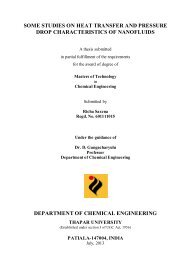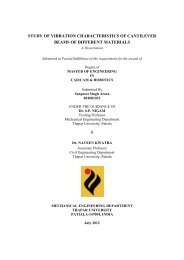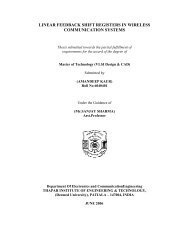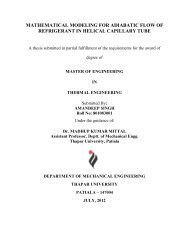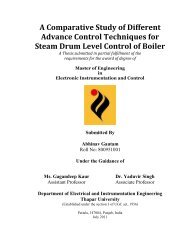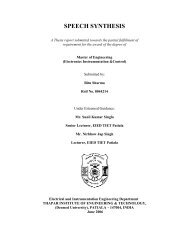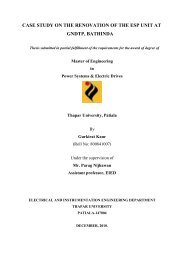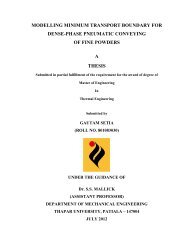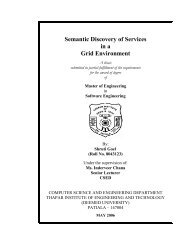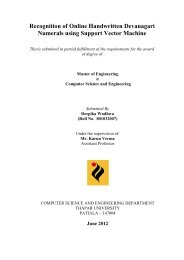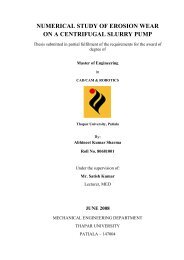from indigenous fermented foods and human gut ... - Thapar University
from indigenous fermented foods and human gut ... - Thapar University
from indigenous fermented foods and human gut ... - Thapar University
You also want an ePaper? Increase the reach of your titles
YUMPU automatically turns print PDFs into web optimized ePapers that Google loves.
137<br />
Chapter V Discussion<br />
was dependent on medium pH <strong>and</strong> incubation temperature, <strong>and</strong> is inversely correlated with<br />
the specific bacteriocin production.<br />
Leroy et al. (2003) reported in their study that at constant pH 6.5, high bacteriocin<br />
activity was obtained in the temperature range of 20-30°C. Bacteriocin activity was only<br />
found between pH 5.5 <strong>and</strong> 8.0. Kang <strong>and</strong> Lee (2005) who optimized bacteriocin produced<br />
<strong>from</strong> E. faecium GM-1 reported the optimal production of bacteriocin, when the culture pH<br />
was 6.0-6.5 <strong>and</strong> an incubation temperature of 35-40°C was provided.<br />
The L. casei LAM-1 differed in behavioral pattern, i.e bacteriocin production<br />
occurred in late stage of growth peaking after 18 h. In batch fermentation, L. casei LAM-1<br />
produced bacteriocin at the mid log growth phase, <strong>and</strong> was maximum for upto 2,300 AU/ml<br />
at the late stationary phase (Yoon et al., 2005).<br />
Optimization of inoculum size revealed the maximum production of bacteriocin <strong>and</strong><br />
inhibition of sensitive strain to 1% for all of the isolated strains of L. casei (LAM-1). One<br />
percent (1% v/v) inoculum was used in bacteriocin production experiments by many authors<br />
(Leroy et al., 2003; Moreno et al., 2003; Achemchem et al., 2005).<br />
Plasmid curing revealed that the bacteriocin production genes are mediated by<br />
chromosomal DNA. These findings are in accordance with Franz et al. 1996 <strong>and</strong> Du Toit et<br />
al. 2000, who reported that no plasmid could be isolated <strong>from</strong> L. casei LAM-1 indicating that<br />
the gene for bacteriocin production are located on the chromosomal DNA.<br />
The activity of bacteriocins produced by L. casei (LAM-1) was thermo-stable <strong>and</strong><br />
retained their activity even after the heat treatment at 121°C for 15 minutes. These results<br />
were consistent with the stability of bacteriocins reported previously. Ying et al. (2011)<br />
observed that pediocin LB-B1 to be relatively heat stable at moderate temperatures of 100 o C



